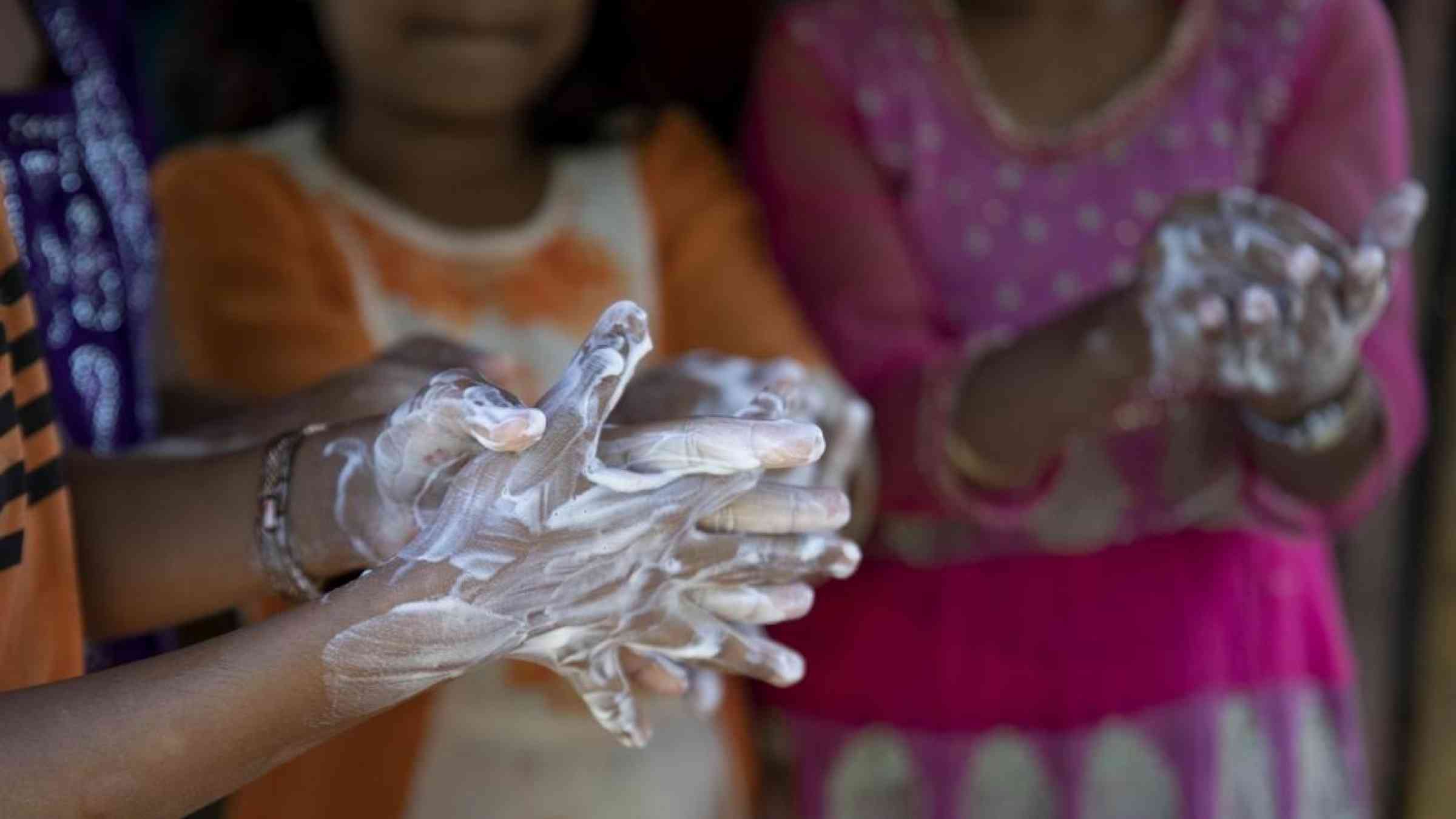Please help us improve PreventionWeb by taking this brief survey. Your input will allow us to better serve the needs of the DRR community.
Covid-19 and the displaced: Addressing the threat of the novel coronavirus in humanitarian emergencies

UNICEF/032020/Himu
The world is gripped by a truly global public health emergency. From New York to Wuhan, attention and resources are being directed to fight the spread of COVID-19, a disease caused by the novel coronavirus (officially, SARS-CoV-2). On March 11, 2020, the World Health Organization (WHO) officially declared the situation a pandemic. Healthcare systems in even the most advanced countries are being overwhelmed. As the pandemic[2] spreads, the coronavirus will disproportionately impact the world’s most vulnerable, among them refugees, asylum seekers, and internally displaced people (IDPs). These populations must be included in the global response to the virus. This is essential to protecting not only these communities, but societies at large.
The scale and speed of the pandemic underscore how deeply interconnected the world’s populations are. Nevertheless, at precisely the moment when global solidarity and cooperation are essential, many nations are turning inward as they seek to protect their citizens. But a virus does not respect borders. Nor does it discriminate. A truly effective response, not to mention a morally correct one, also must not discriminate.
The world’s more than 70 million forcibly displaced people—including refugees, asylum seekers, IDPs, and other forced migrants—are among the most vulnerable. Already, their displacement leaves them disadvantaged in many ways. The impact of the epidemic both exacerbates and is exacerbated by the conditions in which they live. A series of factors make them extremely vulnerable to the spread of the virus.
The first factor is population density. Many refugees and internally displaced people live in cramped conditions, including formal camps, informal settlements, or population-dense urban spaces. Multiple families are often forced to share the same bathroom, the same cooking, and the same bathing facilities – if they have access at all. Some are forced to share the same tent. In some countries, asylum seekers and irregular migrants are placed in detention, often in appalling conditions. The ease with which the coronavirus spreads makes these living situations potentially disastrous.
Second, the forcibly displaced generally have difficulty accessing basic services—especially healthcare. When they have access, it tends to be to primary healthcare. Intensive care – the kind of care that COVID-19 patients need when they develop acute respiratory distress syndrome – is scarce to nonexistent, especially in camp settings. In addition, those fleeing conflict or natural disasters often struggle with underlying health conditions, including malnutrition, psychosocial stress, and other infectious diseases like TB. These conditions make them more vulnerable to the virus.
Third, the limited access to reliable information for displaced communities will complicate efforts to respond. Misinformation, mistrust of authorities, the absence of communication networks, and language barriers can all prevent accurate and far-reaching messaging. Without critical information about the coronavirus, the displaced may not only risk spreading the infection, but find themselves in violation of new policies. At risk of deportation, asylum seekers without legal status are often reticent to trust local authorities, much less reveal themselves once they get sick.
Fourth, the humanitarian supply chain may be challenged by the outbreak. Relief workers may reduce or cut contact with displaced communities to help prevent spread of the virus. Many humanitarian actors will not have the training or resources to respond to such an unprecedented crisis. Governments are restricting the travel of international personnel and the movement of vital supplies. Steps to close borders, halt transportation, and shutter businesses are interrupting supply. The resulting shortages of goods could have devastating consequences in many humanitarian contexts.
Finally, as governments, NGOs, and international organizations redirect their attention and resources to combat the pandemic, the financing needed to respond to ongoing humanitarian and displacement crises is at risk of falling dramatically. Already, responses to many of these crises are acutely underfunded. The lasting economic impact of the pandemic on the global economy will only aggravate this problem just as aid agencies find themselves increasingly overwhelmed.
Certainly, many of the challenges that displaced people face will be shared by vulnerable and marginalized citizens in every country affected by the COVID-19 pandemic. However, we must recognize the unique circumstances of refugees, asylum seekers, IDPs, and other forced migrants in light of the threat an outbreak presents. What follows is a snapshot of how these and other issues are playing out across major humanitarian and displacement crises. The information and analysis in this report reveal key principles and recommendations that should be part of any effective humanitarian response to the pandemic.
Explore further
Please note: Content is displayed as last posted by a PreventionWeb community member or editor. The views expressed therein are not necessarily those of UNDRR, PreventionWeb, or its sponsors. See our terms of use
Is this page useful?
Yes No Report an issue on this pageThank you. If you have 2 minutes, we would benefit from additional feedback (link opens in a new window).